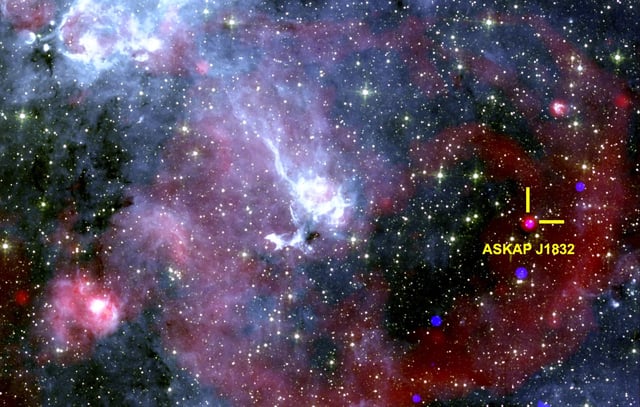Overview
- ASKAP J1832-0911 cycles through two-minute bursts of radio waves and X-rays every 44 minutes, recorded by Australia’s ASKAP array and NASA’s Chandra Observatory.
- Situated about 15,000 light-years away in the Scutum constellation, it marks the first member of its class to emit detectable X-ray pulses.
- Six months after initial detection, follow-up observations found its radio output 1,000 times fainter and X-ray emission absent.
- Researchers are weighing interpretations that include an aging magnetar, an ultra-magnetized white dwarf in a binary system, or a novel type of celestial object.
- Astronomers are organizing rapid multiwavelength campaigns to decode its emission mechanism and hunt for other long-period transients.



